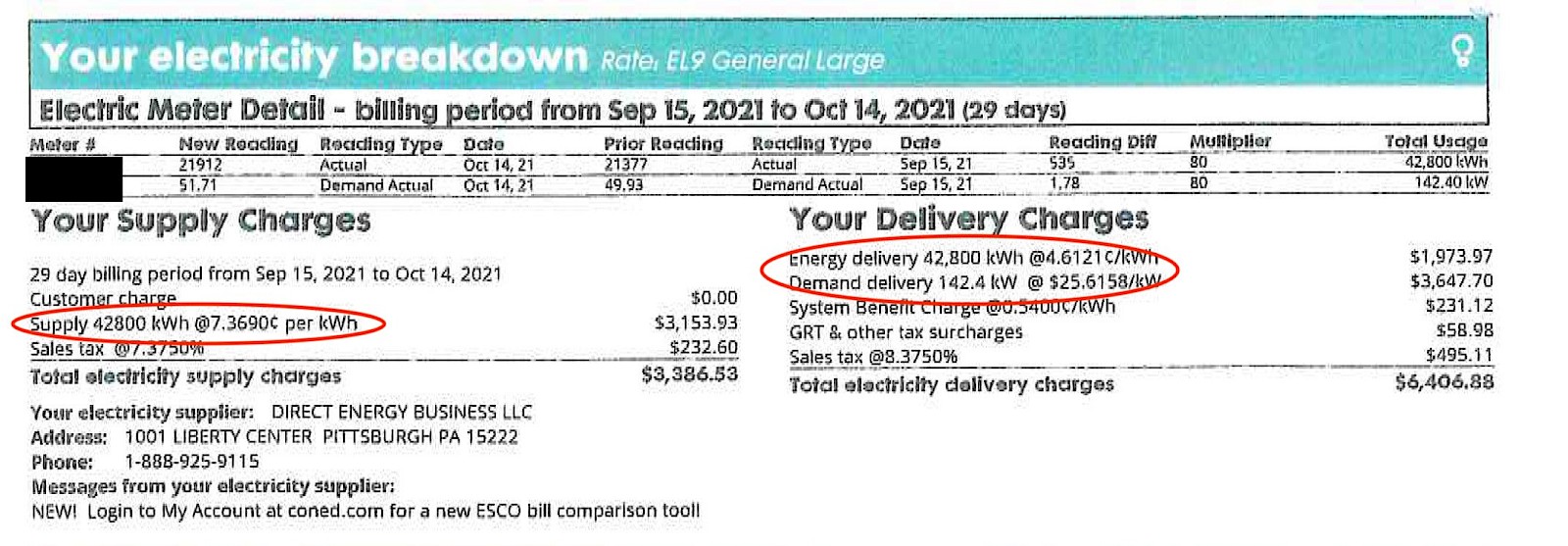It's been official since June 2022 when NY-Sun announced the rollout of it's revised block grant schedule for Con Edison territory. The incentives for commercial, a.k.a. non-residential, solar in New York State are among the best in the country. The first block of the non-residential program, which just closed on July 7, 2023, paid $1.2/watt against the cost of commercial solar installations. The second block, still open, is paying $1/watt, and the third, which will close when this 20MW block fills up, pays $.8/watt. These grants, when combined with the federal ITC and MACRS, can offset more than 75% of the cost of a solar project.
The reason NY-Sun is ramping up it's commercial solar subsidies is twofold. First, there's the ambitious solar target set by Governor Hochul in September 2021 that calls for 10 GW of solar to be installed in New York by 2030. Then there's the Con Ed rate schedule. Most businesses in Con Ed territory fall under tariff rate EL 9, which, due to it's lower supply and delivery charges, supplemented by a demand charge, extends the payback period for net metered solar systems (the most common type of solar system billing in NYS).
The primary financial benefit of solar comes from offsetting supply and delivery charges. In the case of residential solar, EL 1, the supply and demand charges make up the vast majority of an electric bill:

You can see above that the supply and delivery charges for a typical EL 1 account in Westchester County are 11.5 cents and 15.7 cents respectively for a total rate of .27 cents per kWh.
Now here's is a sample EL9 bill—in this case, that of a restaurant:

We can see the supply and delivery charges, 7.36 cents and 4.6 cents, respectively; however, there is a third charge, "Demand delivery." This is a charge for the peak rate at which the customer consumed energy during the billing cycle. The power rate is measured every fifteen minutes and the charge is assessed according to the peak rate only. This means you could be powering a single light bulb for 2,879 of the 2,880 fifteen minute intervals in a month, consuming less than a kW of power, but in the final fifteen minutes of the billing cycle, you turn on a big generator and you spike from 1 to 100kW, you will be charge 100 x $25.6 in this case or $2,560. In this way, Con Ed more than makes up for the lower supply and delivery charges.
But it is against supply and delivery charges that solar financial offsets are typically modeled. And so in the case of EL9 customers, offsetting such low supply and delivery rates doesn't yield a payback period short enough to make solar attractive to most business owners in Con Edison territory. Simply put, the Con Ed's billing protocol, meant to discourage demand spikes that tax the grid, acts as a deterrent against solar. Hence the large incentives for commercial solar.
Moreover, it must be noted that commercial customers may very well see reductions in their demand charges, to the extent that solar production coincides with demand spikes. Often it does as demand spikes coincide with excess air conditioning usage, which usually gets revved up on the hottest, sunniest days.
At current incentive rates—payback periods of 4 to 5 years on an invesment that produces revenue for 30 years—are not uncommon, putting annual rates for return for this well above market.
So ff you're a business based in Westchester County, New York, or Connecticut, please feel free to reach out to us for a free energy assessment and solar installation quote!
